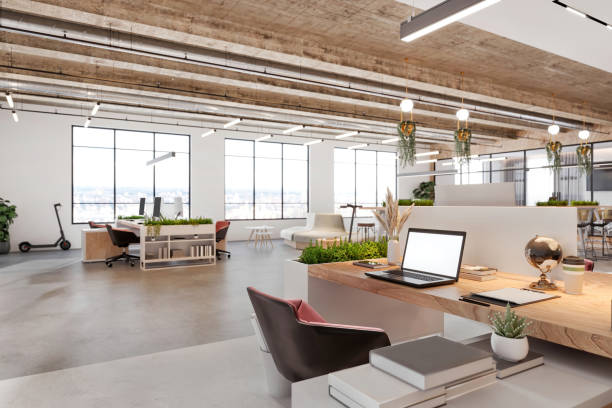(ThyBlackMan.com) Light plays a pivotal role in overall well-being. Proper lighting increases energy levels and supports better sleep, which makes you healthier and happier. When designing a space, considering the impact of light can lead to environments that enhance comfort, productivity, and mental health.
1. Harnessing Natural Light for Well-Being
A wellness-oriented space requires natural light. Sunlight plays a vital role in keeping your sleep on track. It also helps your body create vitamin D, giving you strong bones and an immune system boost. Additionally, natural light reduces feelings of sadness and anxiety. This improves your mood and promotes a sense of calm and balance. Natural light supports your overall health and happiness.
Getting the best use of natural light requires careful thought about where to place windows and the direction the building faces. For instance, windows facing the south get most of the sun throughout the day. This can be achieved by using large windows and skylights. They flood your house with natural light. And this creates a bright and inviting space.
Furniture and workspaces can also be arranged to take advantage of natural light when designing interior layouts. Other ways to add to the natural light distribution include reflective surfaces like mirrors and light-colored walls.

2. Optimizing Artificial Lighting for Comfort and Function
While natural light is the gold standard, artificial lighting is vital for everyday function. It should imitate natural light to help maintain our health and well-being. This means looking into color temperature, as well as the intensity of sources of light. Cooler light temperatures are recommended for task-oriented areas like offices and kitchens to promote focus and alertness. Warm light temperatures create a comfortable, relaxing atmosphere, making them appropriate for the living room and bedrooms.
You can also use adjustable lighting like dimmable or smart lighting. These can be adjusted for the time of the day and activities being performed. Also, LED light offers a lot of flexibility and uses less power. If you’re looking for a wide range of quality LED lighting solutions, check out options like XK Glow.
3. Strategic Lighting Placement for Enhanced Usability
Artificial lighting placement is vital for function and comfort. Proper light placement considers how a room flows and guides where people move. This creates a sense of uniformity within the space. Good light positioning also ensures the light is evenly distributed in all areas. This minimizes unwanted glare and shadows that can cause eye strain.
Using layers of lighting creates a well-balanced space. Ambient lighting, like ceiling or recessed lights, provides general lighting. For specific activities, add task lighting like desk lamps or under-cabinet lights. Use accent lighting to showcase features or artwork, add depth to the space, and enhance appeal. Thoughtfully integrating these lighting layers lets you build a comfortable space that works and improves its usability.
Endnote
Light greatly affects your physical and mental well-being. Good light design isn’t just about how it looks. It’s also about how a space feels and works. Natural light lifts your mood and helps you sleep better. It makes your body produce vitamin D for good health. Using well-placed, high-quality lighting can make your home a better place to live and work.
Staff Writer; Kelvin Palmer

















Leave a Reply